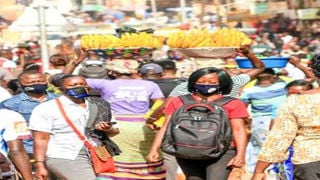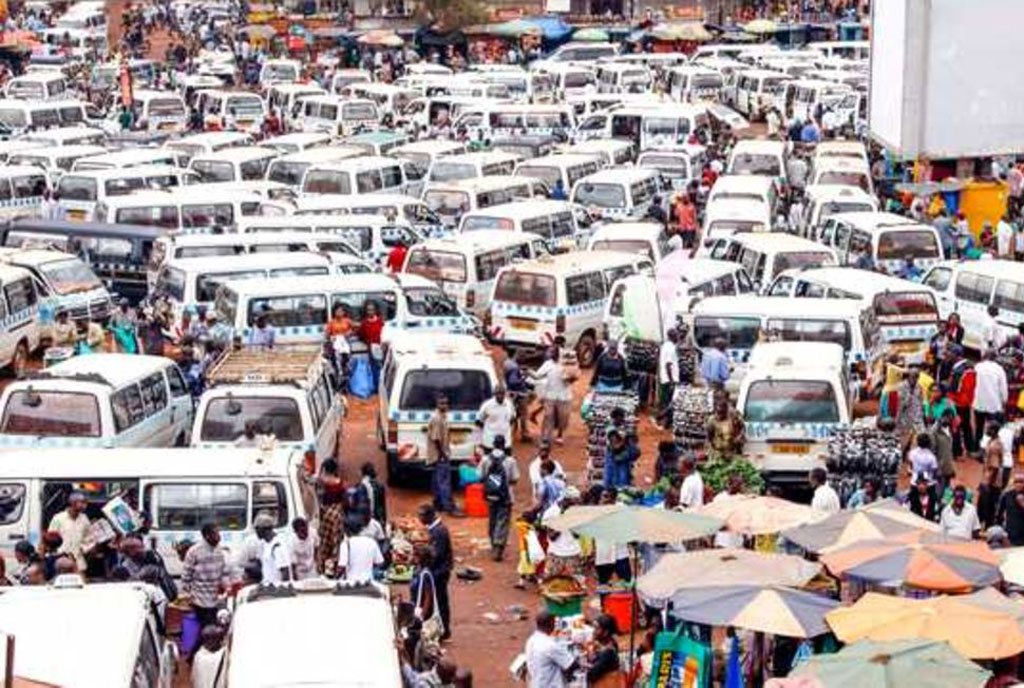
A typical pedestrian congestion at the Luwum street junction. PHOTO | MORGAN MBABAZI | NMG
|Special Reports
Prime
Kampala marks 50 years amid chaotic changes to fix mess
What you need to know:
- This is symbolic of the physical planning chaos – or lack of it – that Kampala is trapped in.
In August, Kampala, the capital city of Uganda, will be marking 50 years since it was declared a Black Man’s city when President Idi Amin expelled some 80,000 mostly Indians who dominated the country’s economy then and constituted about one percent of the country's population. It was called Africanisation.
While these Indian families are noticeably preparing to mark the golden jubilee of their exodus in far flung cities where they fled to, settled and prospered in the UK and Canada, Kampala has also this year been trying for the umpteenth time to look like a decent modern city. Following the August 1972 expulsions, the city descended into one chaotic mess with every new year, as disorder in the planning, transport and commerce sectors became the norm.

Modern buildings in Uganda are replacing the once Indian architecture. PHOTO | MORGAN MBABAZI | NMG
In February, the central government which took over the administration of the capital city 12 years ago from the elected (Kampala District-City) local government, physically removed the hawkers and street vendors who have been part of Kampala’s life for half a century.
Over the years, the city authority had made several attempts to get vendors off the streets in vain, even when the city authority had constructed markets and renovated existing one in various suburbs, the vendors stayed on the streets.
However, this time, a combination of police and city enforcement teams violently swept them off the streets, arresting and charging those who defied the orders. For many years, vending in Kampala was considered a poor man’s quest for survival in an urban jungle and the change of governing structure a decade ago was expected to improve the vendors’ working conditions or at least reduce systemic corruption and streamline service delivery by the city authority.

The Kampala old taxi park before it was rehabilitated. It has however not reduced congestion. PHOTO | MORGAN MBABAZI | NMG
Politicians and technocrats argued that the brute force being applied in the eviction of vendors would not bring the desired results as these were a mere representation of the people.
A majority of the people in Kampala live hand-to-mouth, and sustain the city’s street vendors and hawkers trade. Those who buy from vendors are mainly ordinary folk who walk everywhere in pursuit of daily wage jobs because they have no money for transport and do not buy groceries in bulk.
Between the street vendors and the informal public transport, Kampala is one huge quagmire suffering from constant human and vehicular congestion.
In 2010, a Ministry of Works feasibility study on decongesting the city’s metropolitan area was proposed in the National Transport Master plan. Studies on the Kampala Bus Rapid Transit were carried out and recommended high capacity buses, high trip frequencies and reduced junction delays to ensure smooth movement of traffic. Nothing much came out of that.
ALSO READ: Why is Uganda…Uganda?
The city’s public transport is still a mess and there are no quick solutions. Bus companies such as Pioneer collapsed before take-off partly because they could not compete with taxis and boda bodas. To date, Kampala lacks a formal and reliable transport system or network. An average commuter wastes up to 20 hours a week in traffic. Too many vehicles are still coming into the central business district, competing for narrow roads with boda bodas, pedestrians and street vendors and hawkers.
Africanisation gone wrong
Kampala, whose original architecture was largely influenced by the Indians who built it under the colonial rule of Captain Lugard in 1890, retained the same face for 82 years until the rural urban migration of the 70s and 80s brought in more and diverse Ugandans, who put pressure on all city infrastructure that hardly improved over the years. It was growing problem.

Dr Specioza Kazibwe
Former vice president Dr Specioza Kazibwe told parliament some 30 years ago that the frequent blockage of the city sewerage system was a result of dietary differences between native Ugandans and the immigrant Indians for whom the city was designed.
ALSO READ: 'Fathers' of African independence
She elaborated, invoking her credentials as a health scientist, that the digestive waste of a typical Ugandan was six times more than that of a typical Indian, thus exerting immense pressure on the sewer system. She may have exaggerated, but other traditional lifestyles and attitudes have certainly played a part in making Kampala a nasty place to live in.
While some economists argue that street vending provides meaningful source of livelihood for the unemployed youth and the low class , others see them as a nuisance and describe their existence as “urbanisation of people without capital” according to World Bank data.
In1990, when Kampala was marking its centenary, the city and the country were too broke to throw a party, so the city management under Lord Mayor Christopher Iga, designated some five acres for preservation as green space near the city centre and named it Centenary Park, for future generations to have some breathing space from whatever developments the future brought. But within a decade, Centenary Park had become an unsightly slum of chaotic commercial activity.
Planning chaos
This is symbolic of the physical planning chaos – or lack of it – that Kampala is trapped in. But there is no shortage of smart ideas, that are however just mouthed and not implemented.
There is for example the Greater Kampala Metropolitan Area planning body that is quoted from time to time and exists in some World Bank documents. The GKMA basically comprises three districts of Wakiso, Mukono and the core Kampala district city. The area has more than 6.7 million people.
Decongesting Kampala would be all the easier by incorporating the old kingdom roads in Wakiso and Mukono, which surround Kampala city.
And the entire eastern flank of these districts is all Lake Victoria, which would provide cheap and free marine transport connecting Masaka, Entebbe, and Kampala and Jinja cities. So, many “ifs’’ in Kampala’s development and physical planning story. But for now, one of Kampala's claim to fame is as one of the world’s most polluted towns, usually among the top six. Pollution kills some 60,000 persons in Greater Kampala Metropolitan Area a year compared with Covid-19 which killed 3,000 in two years.
The vehicular pollution of Kampala is a story for another day, as the city is fast running out of space to accommodate the immobile rolling stock.
Last week, the police said that they are stuck with 5,015 boda bodas confiscated from errant riders over the past year.
The owners have “refused” to claim them by proof of documents and paying the fine. So as Kampala marks the golden jubilee of its Africanisation, you don’t want to contemplate what damage a fire during rush hour would do in Kampala.
*Written by Joachim Buwembo and Nelson Naturinda




